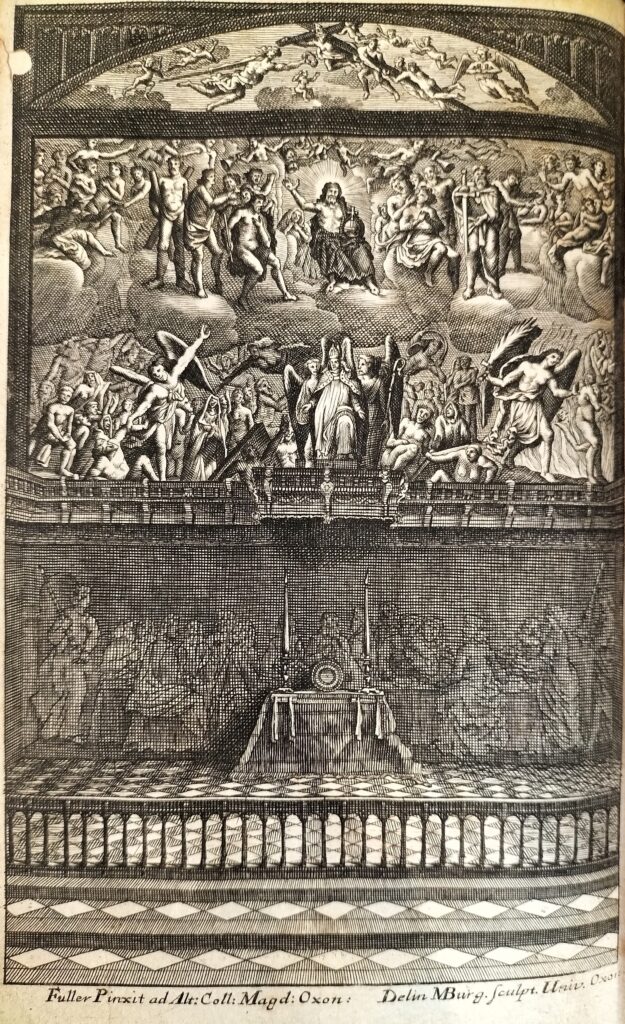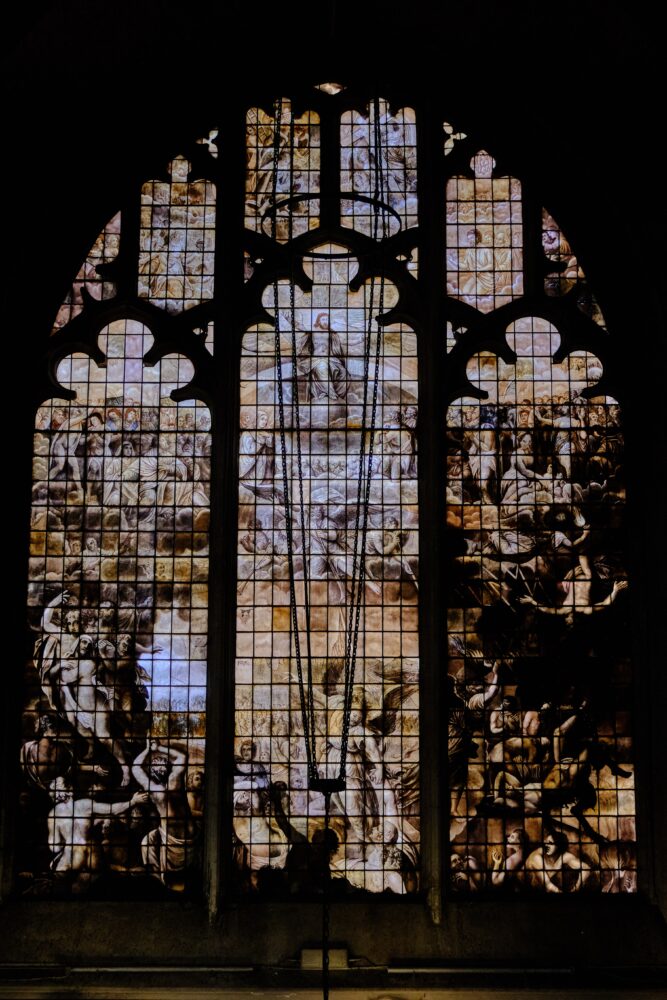


For over a century, Magdalen’s chapel remarkably had two facing scenes of the Last Judgement. Before the West Window was completely reinstated in 1675, the college commissioned a different representation of the subject for the altar wall by the English painter Isaac Fuller (1606[?]-72), who received payment in 1664.


Fuller’s Last Judgement was lost in the nineteenth century when a reredos was installed on the Chapel’s altar wall according to the design of Lewis Cottingham (1787-1847). The painting’s appearance, however, is recorded through surviving works on paper, including an engraving by Michael Burghers (c.1647-1727). Fuller’s Last Judgement not only responds to Greenbury’s facing window but to Michelangelo’s Last Judgement, incorporating a sweep of nude figures among the resurrected and the elect. Fully clothed but nonetheless prominent in the scene is the college’s founder, William Waynflete (1398-1486), whom Fuller located in lower centre of scene between a pair of angels and directly beneath Christ in judgment.


Burghers’s engraving of the Last Judgement is found in a printed volume of 1718 featuring a laudatory poem by Joseph Addison (1672-1719) dedicated to Fuller’s painting. Addison’s poem, The Resurrection, praises the many hues of Fuller’s work, creating an implicit contrast with the monochrome design of Greenbury’s glass:
The hallow’d field, a bare white wall of late
Now loath’d in gaudy colours, shines in state;
At left some little interval confess
It’s ancient simple form, and homely dress
The skillful artist laid o’er every Part,
The First foundation of his future Art
O’er the Wide frame his ductile colours led
And with thick daubings all the wall o’erspread.


As Addison stood in the Chapel between Greenbury’s window and Fuller’s painting, he had reason to be dazzled by the latter’s comparative splendour. A great storm in 1704 had damaged the painted glass. It was not until the late eighteenth century that repairs were carried out. An initial proposal was quite interventionist, as a surviving drawing with wash by the artist Francis Eginton (1737-1805) shows a rethinking of the composition to accommodate a mullion running through the centre of the window.


Competition with peers in Oxford may have partly fuelled the desire to restore Magdalen’s West Window. In 1779, Sir Joshua Reynolds (1723-92) produced designs of the Seven Virtues to be executed for the west window in New College by the glass painter Thomas Jervais (d.1799).